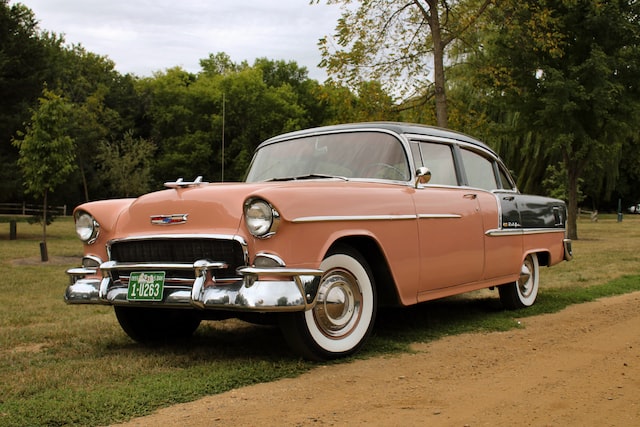The steering wheel is one of the parts of the car’s driving system, which has a circular shape and is directly used by the driver to control the direction of the vehicle’s movement. According to the convention of each country on the direction of road traffic, the steering wheel will be placed on the right or left side respectively. This means that, for countries where the right direction of movement is specified, the steering wheel will be installed on the left and vice versa.
Turning the wheel is one of the especially important skills when driving, helping new drivers handle complex situations. Usually, holding the steering wheel and getting into the habit of controlling the steering wheel are not noticed. That is a serious mistake, because when traveling long distances, if you have a proper driving hand position, it can make the driver tired quickly, even if not applied correctly, it can lead to danger when the unexpected happens.
Although the technique of turning the wheel seems to be quite simple, mastering this technique also takes a lot of time. Not to mention, each model has different viewing angles, steering wheel angles, and a number of revolutions. Follow this article for more methods about hand positions on the steering wheel.
If you want to get more information about DMV Test, visit our website and try the free DMV practice test, or download it for your IOS or Android devices now!
Hand Positions On Steering Wheel

Think of the steering wheel as a clock face, you should hold your hands in the 9 and 3 o’clock positions on the steering wheel. It means that you should place your right hand at 3 o’clock and your left hand at 9 o’clock. 4 fingers hug the rim of the steering wheel and the thumbs are placed along the rim of the steering wheel. When setting the correct posture, the driver needs to let his shoulders and arms relax, which helps to drive for a long time without fatigue and stiffness.
This way of holding the steering wheel will help the driver easily control the steering wheel in any situation such as driving straight, turning the car right/turning left, turning the car… If the car has a strong collision, this standard steering wheel also helps create the widest angle for the airbag to inflate, protecting the driver’s head and chest, avoiding injury to the hands.
In addition, be careful not to put your hands in a high position, because when a collision occurs, the airbag is activated and ejected with great force. If you leave the wrong hand in this situation, it will cause your hand to hit your face or will cause you more serious injury.
- How to put your thumbs on the steering wheel?
The right way to place the thumbs on the steering wheel is to put 2 thumbs on the rim of the steering wheel, the remaining fingers slightly below. The driver’s hand will not grip the steering wheel tightly nor will it be too loose. This makes it easier to turn the steering wheel when needed. Moreover, the driver can clearly feel the reaction from the road surface to the steering wheel. In the event of an emergency situation, since you don’t hook your thumb into the steering wheel, you don’t have to worry about twisting your wrist.
- Distance from your shoulder to the steering wheel
Shoulder distance to the steering wheel should not be too far nor too close. If it’s too far, the driver will have difficulty rolling the steering wheel many times. If it is too close, it will limit the range of the hand. According to experts, the most standard car driving position is with the elbow at an angle of about 120 degrees and the distance from the shoulder to the steering wheel maintained at about 10-12 inches.
Read more >> How To Park A Car: 3 Common Situations Of Car Parking
Steering wheel turning techniques
- Turn the steering wheel to the right with one hand
Place your hands on the highest position on the steering wheel, then loosen the handlebars as usual and use the palm of your hand to turn the steering wheel to the lowest point. Next, the operator needs to turn the steering wheel in the direction of gradually moving to the edge of the hand, continue to rotate and switch to the normal grip, then turn the steering wheel to the highest point.
- Turn the steering wheel to the right by crossing your arms
Basically, this technique helps the driver to steer at large angles in a short amount of time, which is very useful when traveling in tight areas. In addition, using the technique of turning the steering wheel diagonally will help car users steer more gently for cars with heavy steering wheels.
First, hands on the steering wheel should be in the normal position, start turning until the time is about to cross the right hand, along with that, the driver should turn the steering wheel with the left hand at the same time as the right-hand cross. At this time, the driver will continue to turn the steering wheel after crossing the right hand to the previous position of preparing to cross the left hand, continue to do so until the turn is completely wrapped and the hand is returned to the normal position.
NOTE: The technique of turning the steering wheel with the hands crossed is a set of sequential push-pull movements. If you really control the steering wheel and the vehicle speed when cornering, it is not necessary to hold in the specified standard position. If you can calculate the required steering angle, you should choose a reasonable position to hold the two hands to turn the corner.
- Turn the steering wheel in an emergency
This is a technique used a lot in high-speed turns or emergencies. First, you need to pull your hands up to the highest position on the steering wheel, then you want to turn in any direction, just steer in that direction with your hand in the direction you want to turn. For example, when steering to the left, use your left hand to pull the steering wheel and your right hand will glide in the direction of the steering wheel. Continue, let the two hands meet at the lowest position and the right hand will now continue to pull the steering wheel to the upper direction, just like that, the driver repeats until the end of the turn.
No matter how the technique of turning the steering wheel is applied, in the process of moving on each terrain, there are different ways of handling and manipulation. Therefore, in addition to applying the above techniques, in each move, the drivers can feel the experience through the steering wheel.
Common mistakes of the steering wheel

- Put your hands under the steering wheel
This is a very common type of steering wheel grip. Putting your hands on the bottom of the steering wheel helps the driver to reduce hand fatigue and shoulder fatigue, but is very limited in steering. The driver can only control the steering wheel is a small oscillation, meanwhile, a large turn is impossible.
Usually, people often use this grip when driving on an empty road, with few vehicles or obstacles… not requiring much steering. However, if there is an unexpected situation that requires turning the steering wheel, sometimes the driver will not handle it in time, so it is quite dangerous.
- Put your hands close to the body
The way to hold the steering wheel and put your hands close to the body is very common among women. To reduce hand fatigue, many people often adjust the seat close to the steering wheel so that they can put their hands close to the body. According to experts, absolutely do not hold the steering wheel in this way. Because it will limit the operating range of the hands and steering wheel. In the event of a collision, the airbag cannot provide maximum protection.
- Put your hands on top of the steering wheel
This is a very common way to hold the steering wheel. The driver will usually put 1 or 2 hands on the top of the steering wheel. This method can only be used when the vehicle is moving slowly on short distances, with few obstacles… However, this is not a recommended grip. Because if you hold the steering wheel for a long time, it will get tired very quickly. Especially if an unexpected situation occurs, keeping the steering wheel on top of your head will be difficult to handle quickly and accurately.
- Put your hand just on one side
Similar to the above method, but in this way, people will hold the car steering wheel in the style of placing one hand on the side. This is a way to hold the steering wheel that should only be used when moving at slow speeds. If the car moves at high speed, this way of holding the steering wheel is very dangerous because it will be difficult to steer in time.
- Driving with feet
This kind of driving that seems impossible in real life is applied by some drivers out of curiosity. This is definitely an extremely dangerous way to use the steering wheel and can cause traffic accidents. Drivers absolutely do not use any part of the body instead of their hands to control the steering wheel when there is no self-driving mode. Should not be for curiosity or naughty that trade-off the safety of car occupants and other road users.
- 10 and 2 driving position
This way of holding the steering wheel is almost the same as holding the steering wheel properly at the 9:3 position above. The only difference is the position of the hand lying down, specifically, the left hand is at the 10 o’clock position, the right hand is at the 20-minute position. How to hold the steering wheel at 10:20 minutes is convenient to help relieve hand fatigue when driving for a long time. But in terms of flexibility when handling all situations, it is not as good as the 9:3 position.
Above are several recommendations of hand positions on the steering wheel. We hope that this piece of information can help you with better driving experiences.
Read more >> How To Drive A Car: Things to Remember in First Time Driving

UT Utah License Renewal: A 2024 Comprehensive Guide
Discover the ultimate guide to Utah license renewal! This comprehensive guide delves into the intricacies of renewing your driver's license in Utah,...
February 13, 2023

South Carolina S.C. Driver's License Renewal
The South Carolina S.C. driver's license renewal process is designed to be comprehensive, taking into consideration eligibility requirements, renewal methods,...
February 13, 2023

Pennsylvania PA DMV License Renewal: A 2024 Full Guide
The Pennsylvania PA DMV license renewal process is designed to be comprehensive, taking into consideration eligibility requirements, renewal methods,...
February 10, 2023

